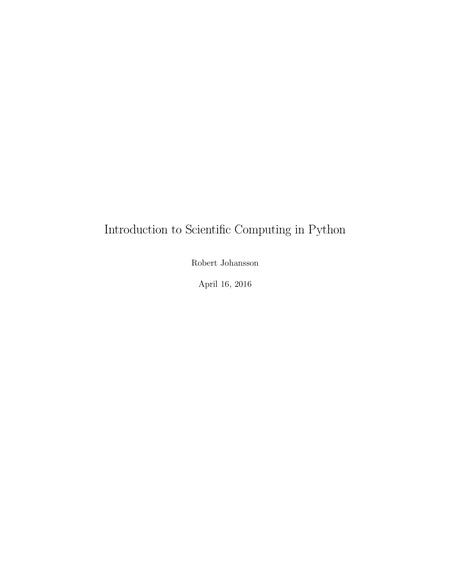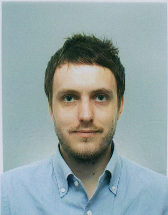
Introduction to Scientific Computing in Python
A set of lectures on scientific computing with Python, using IPython notebooks.
Tag(s): Python
Publication date: 16 Apr 2016
ISBN-10: n/a
ISBN-13: n/a
Paperback: 177 pages
Views: 12,348
Type: Lecture Notes
Publisher: n/a
License: Creative Commons Attribution 3.0 Unported
Post time: 24 Sep 2016 08:00:00
Introduction to Scientific Computing in Python
 A set of lectures on scientific computing with Python, using IPython notebooks.
A set of lectures on scientific computing with Python, using IPython notebooks.
Publication date: 16 Apr 2016
ISBN-10: n/a
ISBN-13: n/a
Paperback: 177 pages
Views: 12,348
Document Type: Lecture Notes
Publisher: n/a
License: Creative Commons Attribution 3.0 Unported
Post time: 24 Sep 2016 08:00:00
Share — copy and redistribute the material in any medium or format
Adapt — remix, transform, and build upon the material for any purpose, even commercially.
The licensor cannot revoke these freedoms as long as you follow the license terms.
Click here to read the full license.
1. Introduction to scientific computing with Python
2. Introduction to Python programming
3. Numpy - multidimensional data arrays
4. SciPy - Library of scientific algorithms for Python
5. matplotlib - 2D and 3D plotting in Python
6. Sympy - Symbolic algebra in Python
7. Using Fortran and C code with Python
8. Lecture 6B - Tools for high-performance computing applications
9. Revision control software
The latest version of this IPython notebook lecture is available here.
Tweet
About The Author(s)
J. Robert Johansson, Ph.D. works with theoretical and computational solid-state physics, with focus on quantum mechanics in superconducting electrical circuits. He has worked on qubits for quantum computing, artificial-atom and resonator circuits for on-chip atomic and quantum-optics-like physics in the microwave regime, and on quantum vacuum related phenomena, such as the dynamical Casimir effect.

J. Robert Johansson, Ph.D. works with theoretical and computational solid-state physics, with focus on quantum mechanics in superconducting electrical circuits. He has worked on qubits for quantum computing, artificial-atom and resonator circuits for on-chip atomic and quantum-optics-like physics in the microwave regime, and on quantum vacuum related phenomena, such as the dynamical Casimir effect.